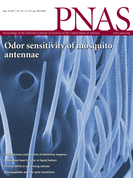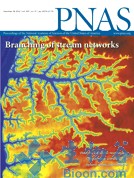PNAS:抑郁症破坏基因表达的日常模式
2013-05-15 PNAS 生物360
日前,一项研究发现,健康的人类大脑存在着基因表达的日常周期,而在临床上有抑郁症的个人的这些模式被破坏了。广泛的推定人为人类大脑中存在着基因表达的日常周期,但是却很难证明,因为捐献给研究的每一个尸检样本都代表了一天24小时中的单个时间点。研究人员通过把大脑基因表达的测量数据与死者死亡时间关联起来从而克服了这个问题。研究人员对来自55名个体大脑的6个区域中的1.2万个基因进行了日表达节律的筛选,这55
日前,一项研究发现,健康的人类大脑存在着基因表达的日常周期,而在临床上有抑郁症的个人的这些模式被破坏了。广泛的推定人为人类大脑中存在着基因表达的日常周期,但是却很难证明,因为捐献给研究的每一个尸检样本都代表了一天24小时中的单个时间点。
研究人员通过把大脑基因表达的测量数据与死者死亡时间关联起来从而克服了这个问题。研究人员对来自55名个体大脑的6个区域中的1.2万个基因进行了日表达节律的筛选,这55名个体没有精神病或神经疾病病史。研究人员发现,超过100个基因在全部6个区域表现出了24小时周期模式,包括被认为对于人体的每日计时机制具有关键作用的基因。相比之下,对34名患有重度抑郁的人的大脑进行的分析表明这些分子节律被破坏了,这反映出了常常与抑郁有关的被破坏了的睡眠/觉醒周期以及生理节律。
研究人员表示,这些发现可能有助于发现用于治疗心境障碍的分子靶标。
与抑郁症相关的拓展阅读:

Circadian patterns of gene expression in the human brain and disruption in major depressive disorder
Abstract
A cardinal symptom of major depressive disorder (MDD) is the disruption of circadian patterns. However, to date, there is no direct evidence of circadian clock dysregulation in the brains of patients who have MDD. Circadian rhythmicity of gene expression has been observed in animals and peripheral human tissues, but its presence and variability in the human brain were difficult to characterize. Here, we applied time-of-death analysis to gene expression data from high-quality postmortem brains, examining 24-h cyclic patterns in six cortical and limbic regions of 55 subjects with no history of psychiatric or neurological illnesses (“controls”) and 34 patients with MDD. Our dataset covered ∼12,000 transcripts in the dorsolateral prefrontal cortex, anterior cingulate cortex, hippocampus, amygdala, nucleus accumbens, and cerebellum. Several hundred transcripts in each region showed 24-h cyclic patterns in controls, and >100 transcripts exhibited consistent rhythmicity and phase synchrony across regions. Among the top-ranked rhythmic genes were the canonical clock genes BMAL1(ARNTL), PER1-2-3, NR1D1(REV-ERBa), DBP, BHLHE40 (DEC1), and BHLHE41(DEC2). The phasing of known circadian genes was consistent with data derived from other diurnal mammals. Cyclic patterns were much weaker in the brains of patients with MDD due to shifted peak timing and potentially disrupted phase relationships between individual circadian genes. This transcriptome-wide analysis of the human brain demonstrates a rhythmic rise and fall of gene expression in regions outside of the suprachiasmatic nucleus in control subjects. The description of its breakdown in MDD suggests potentially important molecular targets for treatment of mood disorders.
本网站所有内容来源注明为“williamhill asia 医学”或“MedSci原创”的文字、图片和音视频资料,版权均属于williamhill asia 医学所有。非经授权,任何媒体、网站或个人不得转载,授权转载时须注明来源为“williamhill asia 医学”。其它来源的文章系转载文章,或“williamhill asia 号”自媒体发布的文章,仅系出于传递更多信息之目的,本站仅负责审核内容合规,其内容不代表本站立场,本站不负责内容的准确性和版权。如果存在侵权、或不希望被转载的媒体或个人可与williamhill asia 联系,williamhill asia 将立即进行删除处理。
在此留言












#PNAS#
48
#基因表达#
55